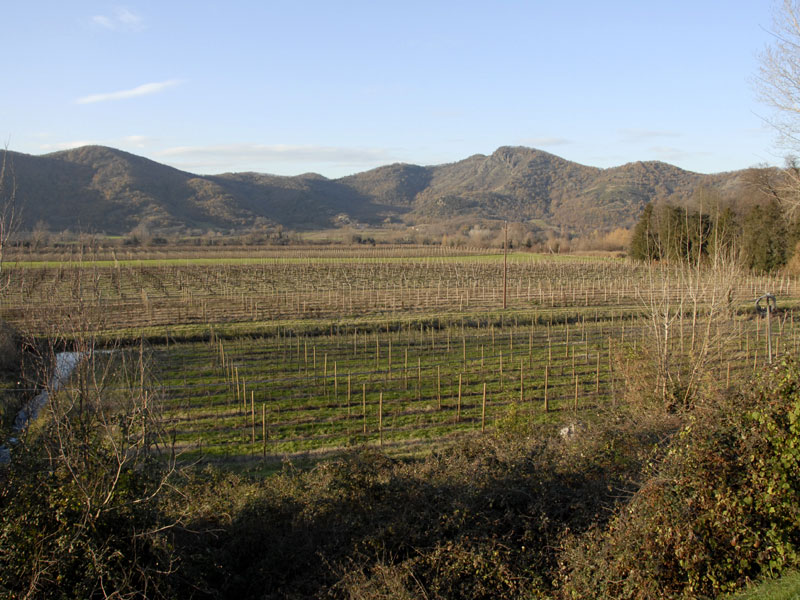No 15 - Horse-shoe Trail


- Departure: Battaglia Terme (Battaglia Terme)
- Arrival: Battaglia Terme (Battaglia Terme)
- Difficulty Level: none
- Length: 3.6 km
- Difference in height: slight, limited to the equipped areas at the Monte Croce ex-quarry
- Involved Municipalities: Battaglia Terme
- Show the map
- Getting to the trail: Coming from the centre of Battaglia Terme or Galzignano Terme,the trail starts at the parking area of Monte Croce ex-quarry.
- Best period: spring, autumn and winter

No 15 - Horse-shoe Trail
 Download KMZ
Download KMZ  Download in GPX format
Download in GPX formaten
Located in a natural amphitheatre, the villa-cum-castle of Catajo sits in the background of this trail. The path enters what was once the property of the Catajo on level ground, with wide and often straight sections, following a ‘horseshoe’ path at the foot of Mounts Ceva, Spinefrasse and Croce, whose summits can be reached along easy detours. The only section that rises and falls is the one required to cross the railway line. The trail also passes by the quarry of Mount Croce, now an important geological and environmental site featuring a marsh and a large population of Eastern prickly pear, a species from America that has naturalised here and in other parts of this trail and near the summit of Mount Ceva.
The Ferro di Cavallo trail is connected, in addition to the internal routes in the ex-quarry of Monte Croce, also to the trail n. 29 called "delle Creste", from which it is possible to admire wonderful views towards the southern central Euganean Hills, the plain and Battaglia Terme.
From the trail it is possible to visit the centre of Battaglia Terme and the Museum of River Navigation; the only one of its kind in Italy, it presents eyewitness accounts and artefacts concerning traditional navigation activities along rivers.
Catajo Castle was built by marquis Pio Enea degli Obizzi in c. 1570-1573. This grand complex is a cross between a military fortress and a princely palace. Pio Enea II (1592-1674) made some alterations, replacing the stables with a theatre (later turned into a neo-Gothic church) and creating a grotto complete with Elephant Fountain. The great artist G. B. Zelotti covered the walls of the state rooms with frescoes depicting scenes showing the glorious exploits of the family and, in 1768, Tommaso degli Obizzi decorated the entire site with archaeological artefacts and stone furnishings. Catajo Castle then became the property of the archdukes of Austria-Este and the Dukes of Modena who used it as a hunting lodge and country retreat. Having become the property of the Habsburgs and then of the Italian state at the end of the First World War, ownership of Catajo Castle passed to the Dalla Francesca family in 1929. This grand site, now open to the public, is surrounded by two splendid gardens: the Garden of Delights and, within its grounds, the great Giants’ Courtyard, once used for holding tournaments.







